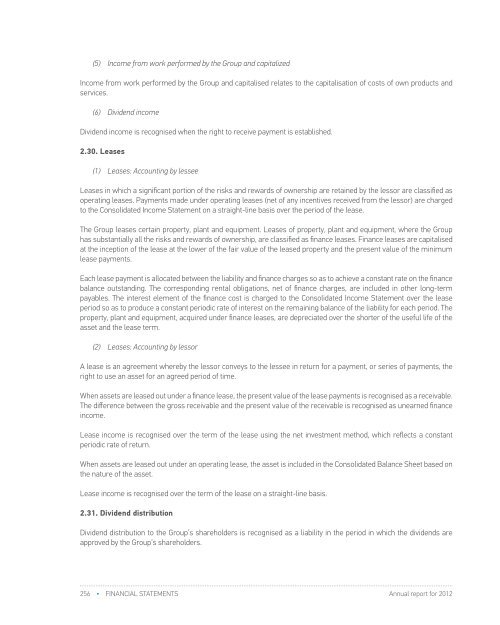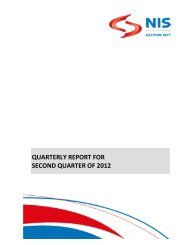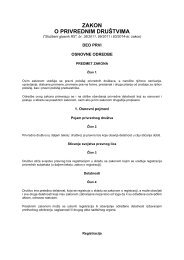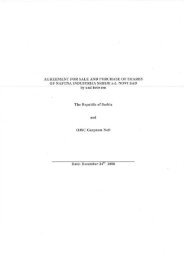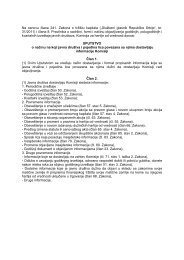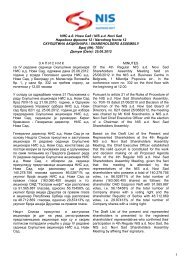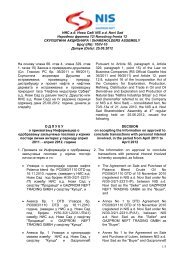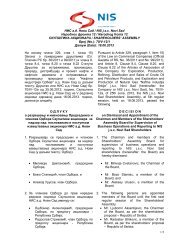FY 2012 - Investor Relations - NIS
FY 2012 - Investor Relations - NIS
FY 2012 - Investor Relations - NIS
You also want an ePaper? Increase the reach of your titles
YUMPU automatically turns print PDFs into web optimized ePapers that Google loves.
(5) Income from work performed by the Group and capitalizedIncome from work performed by the Group and capitalised relates to the capitalisation of costs of own products andservices.(6) Dividend incomeDividend income is recognised when the right to receive payment is established.2.30. Leases(1) Leases: Accounting by lesseeLeases in which a significant portion of the risks and rewards of ownership are retained by the lessor are classified asoperating leases. Payments made under operating leases (net of any incentives received from the lessor) are chargedto the Consolidated Income Statement on a straight-line basis over the period of the lease.The Group leases certain property, plant and equipment. Leases of property, plant and equipment, where the Grouphas substantially all the risks and rewards of ownership, are classified as finance leases. Finance leases are capitalisedat the inception of the lease at the lower of the fair value of the leased property and the present value of the minimumlease payments.Each lease payment is allocated between the liability and finance charges so as to achieve a constant rate on the financebalance outstanding. The corresponding rental obligations, net of finance charges, are included in other long-termpayables. The interest element of the finance cost is charged to the Consolidated Income Statement over the leaseperiod so as to produce a constant periodic rate of interest on the remaining balance of the liability for each period. Theproperty, plant and equipment, acquired under finance leases, are depreciated over the shorter of the useful life of theasset and the lease term.(2) Leases: Accounting by lessorA lease is an agreement whereby the lessor conveys to the lessee in return for a payment, or series of payments, theright to use an asset for an agreed period of time.When assets are leased out under a finance lease, the present value of the lease payments is recognised as a receivable.The difference between the gross receivable and the present value of the receivable is recognised as unearned financeincome.Lease income is recognised over the term of the lease using the net investment method, which reflects a constantperiodic rate of return.When assets are leased out under an operating lease, the asset is included in the Consolidated Balance Sheet based onthe nature of the asset.Lease income is recognised over the term of the lease on a straight-line basis.2.31. Dividend distributionDividend distribution to the Group’s shareholders is recognised as a liability in the period in which the dividends areapproved by the Group’s shareholders.2.32. Capitalisation of borrowing costsBorrowing costs directly attributable to the acquisition, construction or production of assets that are not carried at fairvalue and take a substantial time to get ready for their intended use or sale (qualifying assets) are capitalised as partof the costs of those assets, if the commencement date for capitalisation is on or after 1 January 2009. Capitalisation ofborrowing costs continues up to the date when the assets are substantially ready for their use or sale.The Group capitalises borrowing costs that could have been avoided if it had not made capital expenditure on qualifyingassets. Borrowing costs capitalised are calculated at the Group’s average funding cost (the weighted average interestcost is applied to the expenditures on the qualifying assets), except to the extent that funds are borrowed specificallyfor the purpose of obtaining a qualifying asset. Where this occurs, actual borrowing costs incurred less any investmentincome on the temporary investment of those borrowings are capitalised.3. Critical accounting estimates and judgments IN APPLYING ACCOUNTIG POLICIESEstimates and judgments are continually evaluated and are based on historical experience and other factors, includingexpectations of future events that are believed to be reasonable under the circumstances.3.1. Critical accounting estimates and assumptionsThe Group makes estimates and assumptions concerning the future. The resulting accounting estimates will, bydefinition, seldom equal the related actual results.(1) Income taxThe Group is subject to income taxes. The Group recognises liabilities for anticipated tax audit issues based on estimatesof whether additional taxes will be due. Where the final tax outcome of these matters is different from the amounts thatwere initially recorded, such differences will impact the current and deferred income tax and deferred tax assets andliabilities provisions in the period in which such determination is made.(2) Revenue recognitionThe Group uses the percentage-of-completion method in accounting for its sales of services. Use of the percentageof-completionmethod requires management to estimate the services performed to date as a proportion of the totalservices to be performed.(3) Employee benefitsThe present value of the employee benefit obligations depends on a number of factors that are determined on anactuarial basis using a number of assumptions. The assumptions used in determining the net cost (income) foremployee benefits include the discount rate. Any changes in these assumptions will impact the carrying amount ofobligations.The Group determines the appropriate discount rate at the end of each year. This is the interest rate that should beused to calculate the present value of estimated future cash outflows which are expected to be required to settle theemployee benefits obligations. In determining the appropriate discount rate, the Group takes into consideration theinterest rates of high-quality corporate bonds which are denominated in the currency in which pension liabilities will besettled and whose maturity dates approximate the maturity date of the related pension liability.256 • FINANCIAL STATEMENTS Annual report for <strong>2012</strong>Annual report for <strong>2012</strong>FINANCIAL STATEMENTS • 257


